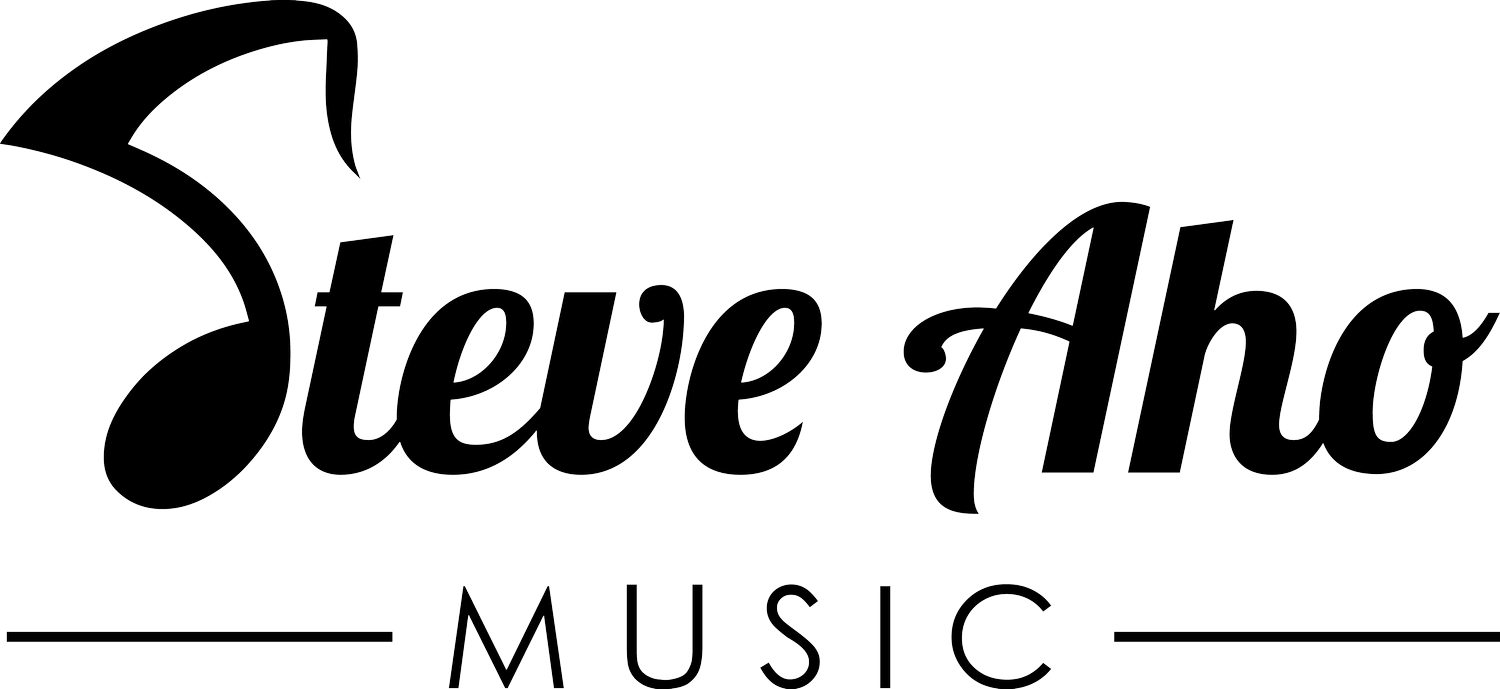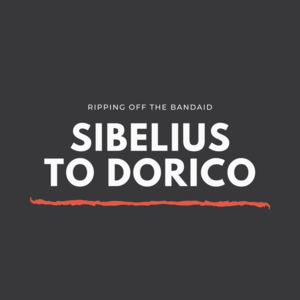changing platforms from sibelius to dorico: a necessary step
the back story:
As most of you know, a good portion of my work is done in the music notation world, creating arrangements and transcriptions for different types of projects. Since 2008, my platform of choice has been Avid Sibelius, a choice made based on the available options of the time (prior to that I was a Finale user since 1996). Last year however, I decided to change the software platform I use. As many out there can probably relate, the longer you’ve has been working on a certain platform regardless of field, the harder changing platforms can be. You amass dozens of your own templates, plugins, keyboard shortcuts, macros, workarounds, hacks, and so forth. You become so comfortable and dependent on your platform, regardless of whether it is the best one, that the thought of starting over from scratch can be truly intimidating.
However, in around 2013, development and updates on the Sibelius platform seemed to be slowing to a crawl (related most likely to some corporate restructuring at Avid, where they laid off their key development team and moved development to China). Not long after, I began hearing rumors about a new notation product being developed by Steinberg by the same team of former Avid developers. Eventually in 2016, Steinberg released Version 1 of Dorico, and though it looked impressive (I even attended a great early demo presentation by Dorico’s lead marketing manager Daniel Spreadbury in LA), there were several key features missing that unfortunately made it a no-go for me (notably the lack of support for chord symbols).
Fast-forward to late 2018, I finally purchased Dorico as soon as Steinberg released version 2.0. Since that time, I attempted (though not always successfully) to put aside sufficient time to learn Dorico while still doing the “mission critical” projects in Sibelius. However, deadlines and my own stubbornness/laziness prevented me from really diving into Dorico until more recently. Finally, this past month, having “ripped the band-aid off” and worked exclusively with Dorico on a dozen or so “real” projects, I can say that I am generally quite pleased with it and believe I can finally work as efficiently in Dorico (if not more) as I would in Sibelius.
impressions after making the switch
One of my strongest impressions of the difference between working on the two platforms is that Dorico really wants you to follow a notation and layout “policy.” Sibelius, on the other hand, makes it somewhat easier to “cheat” and make something seem visually correct. However, doing this might cause problems later on. For example, employing a seemingly easy hack in Sibelius to make something look right in the score might not play back properly or remain in the correct position, or perhaps it might not behave as it should in the individual parts. To address this and other problems, there exists a huge repository of user-created plugins, the majority of which serve to add much-needed features (or bug fixes) that Sibelius natively lacks or simply neglects to support. With Dorico, on the other hand, the notation and layout rules seem a bit more strict and the software urges you to follow them or create general exceptions for any necessary deviations. Further, the default parameters in Dorico make for a quite attractive layout from the get-go yet are also completely customizable depending on a project’s specific needs. What this means for my work is that once I get a score looking and behaving like it should, creating another score with a similar look in Dorico can be a relatively quick and easy process.
Without getting overly technical, here are several aspects unique to Dorico that I believe will ultimately be essential boons to my workflow:
Condensing scores: In a word, AMAZING. Dorico 3.1 makes creating a condensed score unbelievably easy. This is especially useful for large orchestral scores, in which, for example, Flute 1 & 2, Oboe 1 & 2, etc. should have their own actual parts, but should be combined on the conductor’s score to share a single staff with different stem directions. Creating a condensed conductor’s score in Sibelius, on the other hand, is still a very ugly and time-consuming process involving hidden staves and tiresome workarounds.
Better guitar tablature support: Not only does Dorico support guitar tablature, it does it quite well. Having created several hundred guitar transcriptions in Sibelius last year working for Masterclass, I would have been very grateful to have taken advantage of Dorico’s smarter handling of bends, dead notes, and alternate tunings. Not to say that Sibelius lacks these features per se, but the management of these elements in Dorico is much more logical and elegant and really makes for a smoother workflow.
Master pages and flows: Dorico uses master pages, much in the same way desktop publishing programs like InDesign do. These makes applying complex layout parameters to multiple parts a breeze. Dorico also uses what it calls “flows” to allow you to create movements or chapters within a project that all can share similar parameters. This is highly useful for creating musical theater books, multi-movement symphonic/chamber works and educational materials.
Drum notation and slash notation: Though these are not necessarily related, I find Dorico’s approach to drum notation to be much more forward-looking and logical (though not without a bit of a learning curve). Slash notation is incredibly easy to create and behaves much more like a legitimate notation style, whereas Sibelius treats it more like a hack.
final notes
Product activation: With both Avid and Steinberg this is a pain. I have had issues with both companies and how their activation is both cumbersome and unreliable. However, I would say from my own personal experience so far that Steinberg is doing a slightly better job here. I do wish they would do away with the USB dongle though! This is 2019, USB is well on its way to being obsolete and I don’t relish the thought of having to always keep a dongle with me whenever I change computers, not to mention the hassle of trying to use a dongle on a laptop that only has USB-C ports (Steinberg, are you listening?).
Keyboard shortcuts: not good enough. Dorico does not allow all actions to be assigned to a key command, something I find incredibly annoying. To be fair, Sibelius doesn’t allow this either. But in comparison to Reaper, my DAW of choice, which has an “action list,” where literally each and every function you could ever imagine using has a way to assign a keyboard shortcut to it, Dorico disappoints and seems to have inherited the awkward key command UI from its parent company’s DAW, Cubase. While I hate to be so harsh in this regard, I really want Dorico to be the notation platform of my dreams, and I hope they will prioritize and address the need for a better key command UI in a future update. For now, keyboard junkies like myself will have to rely on third-party add-ons like AHK on Windows or Keyboard Maestro on Mac (thanks Dan Kreider for this tip).
I hope these takeaways are useful for you. Please comment below with any questions or your own thoughts about Dorico — I'd love to hear them!

